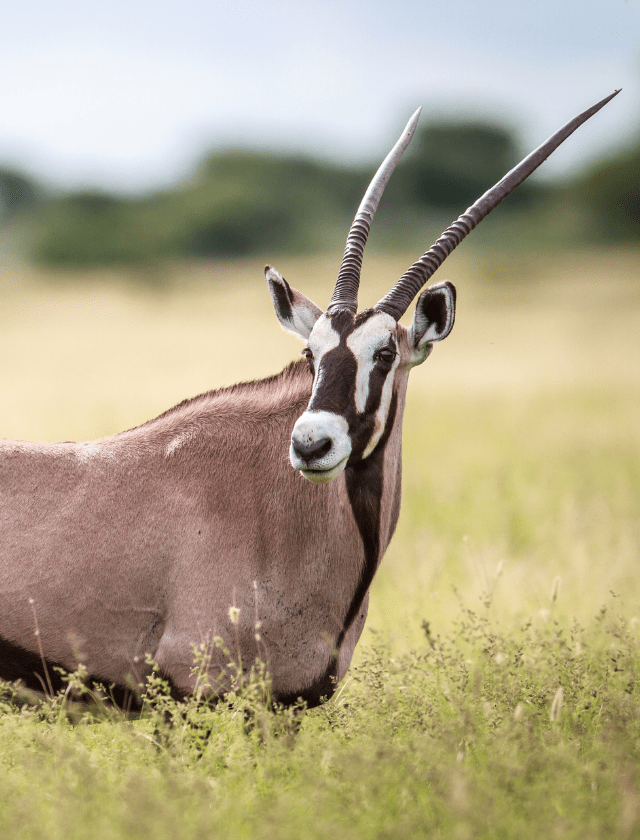The gemsbok, also known as the South African oryx, is a large antelope species found in the dry, arid regions of southern Africa. Here is some information about the gemsbok, including its size, habitat, behavior, and diet:
Size: Gemsbok are one of the largest antelope species, with males weighing between 350-450 kg (770-990 lbs) and standing 1.2-1.4 m (4-4.6 ft) at the shoulder. Females are slightly smaller, weighing between 200-225 kg (440-495 lbs) and standing 1.1-1.3 m (3.6-4.3 ft) at the shoulder.
Dangerous to hunt: Gemsbok are known for being difficult and dangerous to hunt, due to their ability to run at high speeds and their long, sharp horns which can cause serious injury to predators and hunters alike.
Habitat: Gemsbok are primarily found in the arid regions of southern Africa, including the Kalahari and Namib Deserts, as well as in the savannas and grasslands of South Africa, Botswana, Namibia, and Angola. They are well adapted to these harsh environments, able to survive for long periods without water and able to tolerate extreme temperatures.
Activity patterns: Gemsbok are primarily active during the cooler parts of the day, such as early morning and late afternoon, and tend to rest in the shade during the hottest parts of the day. They are known for their incredible endurance and can travel long distances in search of food and water.
Diet: Gemsbok are herbivores, feeding on a variety of grasses, leaves, and shrubs. They have a unique adaptation that allows them to extract moisture from their food, which enables them to survive in extremely dry environments where water is scarce.
In summary, the gemsbok is a large antelope species found in the arid regions of southern Africa. They are well adapted to survive in these harsh environments, are primarily active during the cooler parts of the day, and are known for being difficult and dangerous to hunt due to their sharp horns and ability to run at high speeds. They are herbivores, feeding on a variety of vegetation, and have a unique adaptation that enables them to extract moisture from their food.



